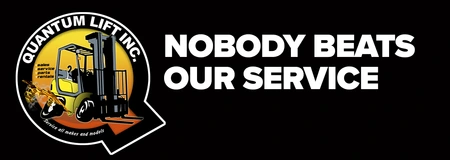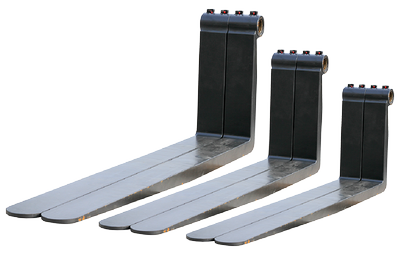Forklift Fork Facts for Facility Managers
The best way to select the right fork for your application is to contact a Quantum Representative who can use their expertise and resources to find the correct attachments for your application.
Call 248.909.4908 or use our contact form to start.
Fast Forklift Fork Facts
- Fork Classes:
There are four classes of forks that have unique mounting dimensions and capacity, ranging from Class I (less than 2,000 lbs) to Class IV (11,000 - 17,500 lbs). - Fork Tips and Taper:
Forks can have different tip shapes (angled or blunt) and taper options (standard, full-taper, or polished) to suit different types of loads and materials. - Fork Hazards:
Forks can pose potential hazards if they have surface cracks, bent blades or shanks, uneven fork tips, faulty positioning locks, excessive wear, or illegible markings. O.S.H.A. provides guidelines for inspecting and repairing forks. - Fork Wear:
Forks can wear away over time due to friction between the floor and the fork heel, reducing their structural integrity and capacity. Fork-wear calipers can be used to measure the thickness of the forks and determine when they need to be replaced.
Some common forklift fork types are:
- ITA / FEM Class Forks:
The most commonly used forks, they have a hook-style mounting and can be easily attached or detached from the carriage. - Pin Type Forks:
Having a pin or shaft that locks into the carriage bar, providing stability, they are most useful in heavy-duty applications and rough terrain. - Block or Brick Forks:
Designed specifically for transporting masonry supplies, such as blocks or bricks, these forks have wide blades and long tips to accommodate the shape and size of the load. - Lumber and Plywood Forks:
Ideal for handling long and bulky loads of wood products, these have tapered tips and extended lengths to facilitate loading and unloading. - Drum Forks:
Used to lift and move cylindrical objects, such as drums or barrels, theses have curved blades that fit around the shape of the drum and prevent it from rolling off.
Forklift Wear and Care
O.S.H.A. is a great resource to best understand what fork conditions should be. Potential Hazards can include:
- Surface cracks
- Blade or shank are not straight
- Fork angle from blade to shank is not straight
- Difference in height of fork tips
- Positioning lock not in working order
- Fork blade or shank wear
- Fork hooks wear
- Fork marking not legible
Cascade offers a complete website with more information, and a forklift guide.
Quantum Lift Technicians are trained on proper fork inspection, and can perform a thorough evaluation of the forks required for your application.
Don't assume you've got the right forks.
We want to understand your specific application to make the best recommendation for proper fork selection.
Call Quantum to ask questsion and schedule and inspection.
Here's a bonus tip:
Watch your email and this website for Quantum's Fork Sale to get the best deals.
©







